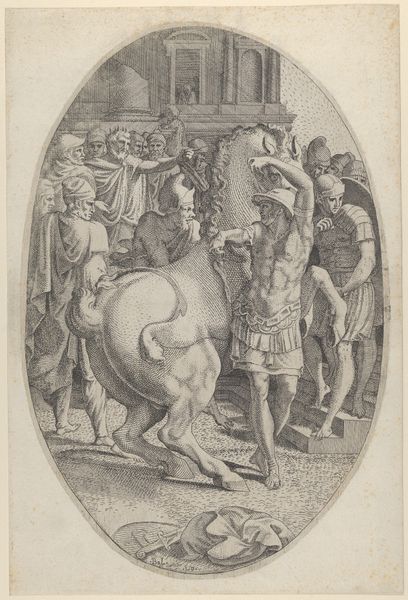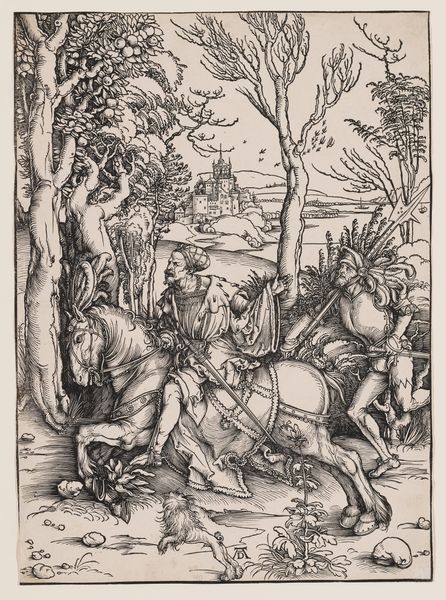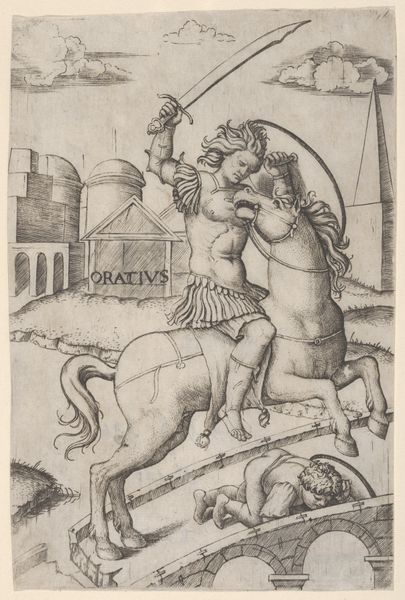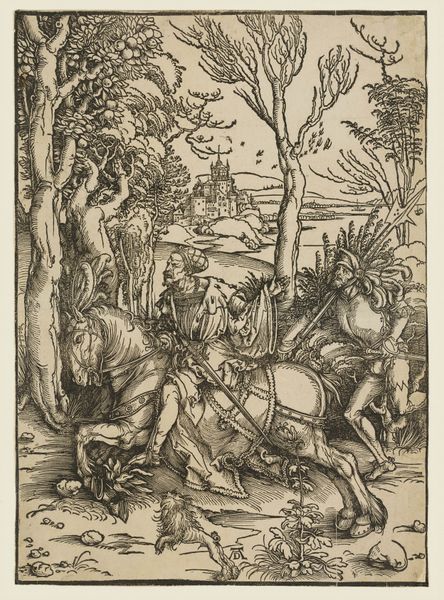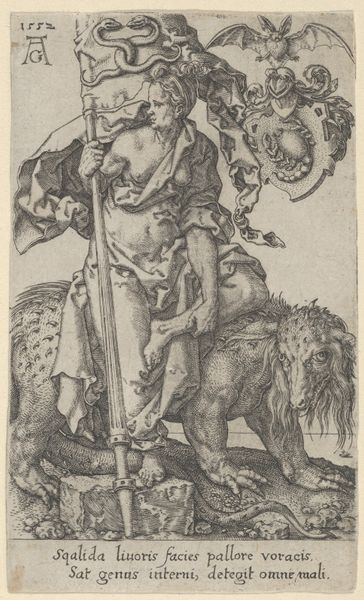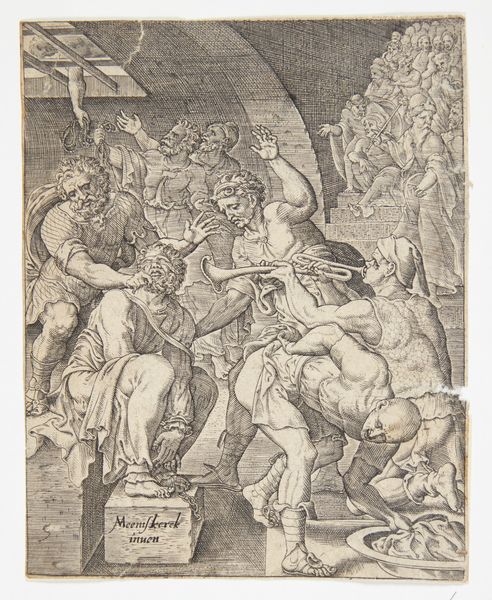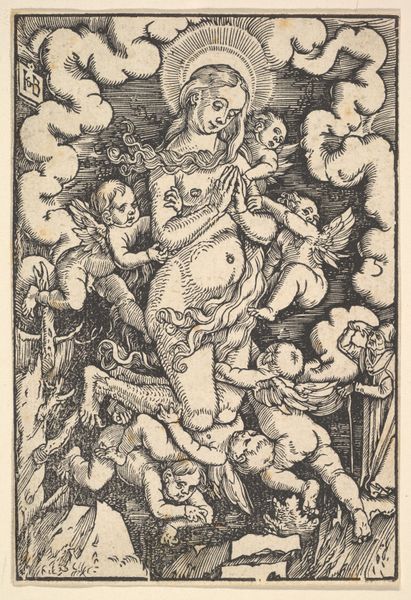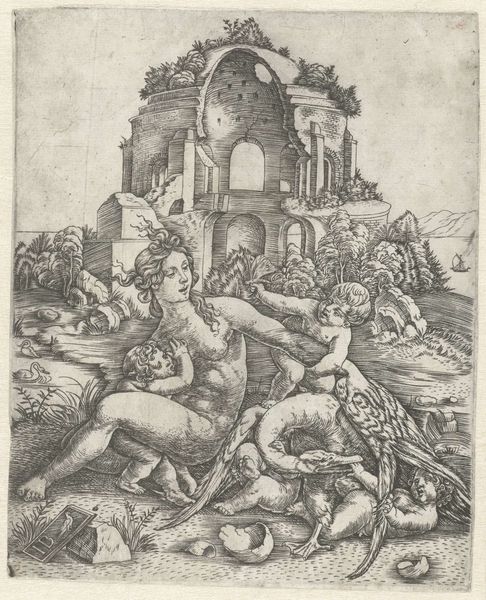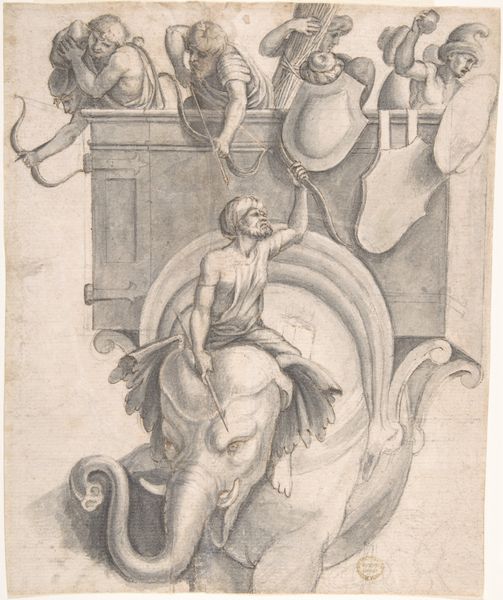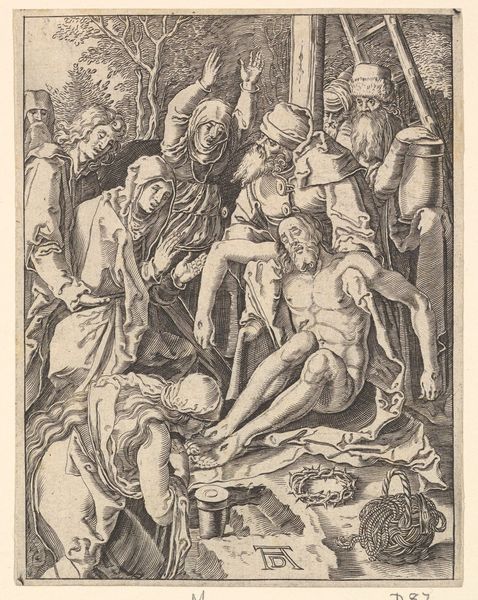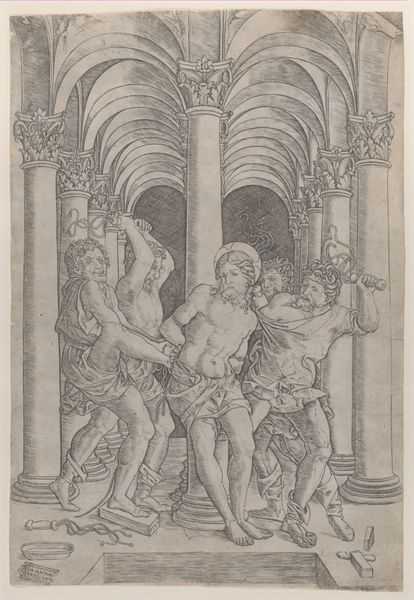
print, etching, engraving
# print
#
etching
#
figuration
#
history-painting
#
italian-renaissance
#
engraving
Dimensions: sheet (trimmed to plate mark): 13.8 x 9.6 cm (5 7/16 x 3 3/4 in.)
Copyright: National Gallery of Art: CC0 1.0
Curator: What a powerful image. All those sharp lines forming such a vivid and turbulent scene. Editor: This etching, entitled "Roman Warrior," was created by Nicoletto da Modena around 1507, placing it squarely in the Italian Renaissance. It is a superb example of printmaking from that period. Curator: The composition is so dynamic, almost theatrical. The light catches the warrior's musculature as if highlighting a stage performer. All the discarded weapons on the ground almost beg the question, is this a celebration of victory or the somber aftermath of war? Editor: It's fascinating to consider how printmaking enabled the wider dissemination of classical imagery and ideals. Etchings like this were more easily reproducible, and thus shaped perceptions of antiquity for a broader audience. It helped create a visual language for heroism and authority during a period of profound social and political change. The physical process involved, applying acid to a metal plate to create the design, really enabled a fine level of detail too. Curator: You're right. It’s a medium perfectly suited to evoke both grandeur and fragility. The very act of creating a print speaks to notions of distribution and accessibility. Where was something like this intended to be seen or hung? Were pieces such as these widely accessible to different classes of society, or intended for a learned elite only? Editor: These prints had remarkable circulation. Consider this, a piece of printed artwork such as this not only served as a decorative object or piece of craftsmanship, but would have acted as an agent of political messaging as well as religious authority. Remember, access to the technology required for printmaking wasn't universal either. So what kinds of labour went into this piece? Curator: It definitely gives one much to contemplate. Thank you for elucidating that so well. Editor: The pleasure was mine. Hopefully listeners are spurred to engage even deeper with the piece’s complexities!
Comments
No comments
Be the first to comment and join the conversation on the ultimate creative platform.
